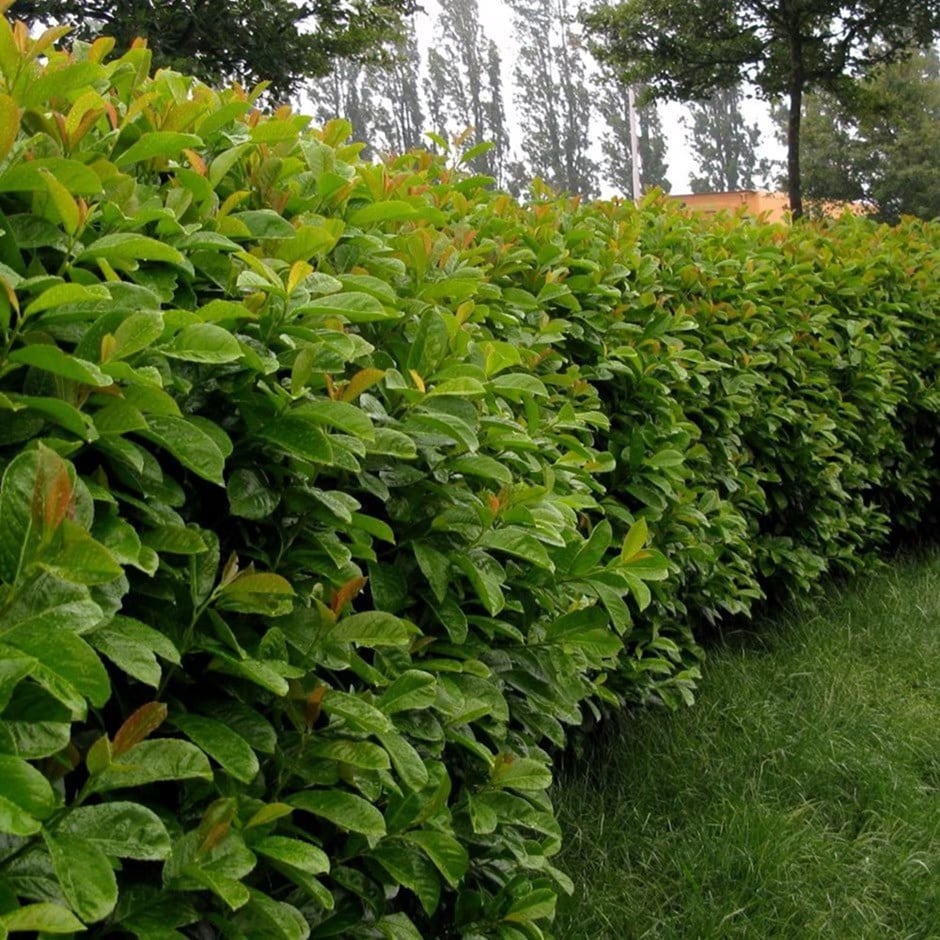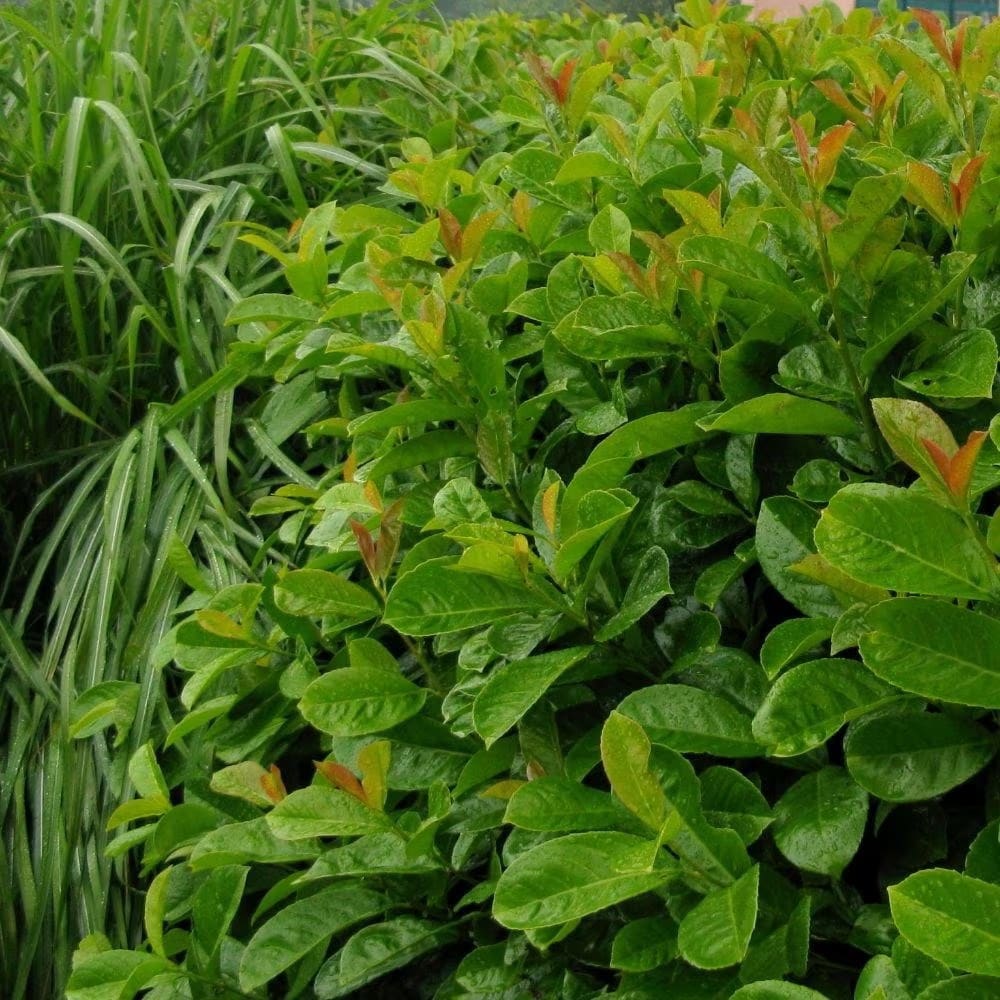Prunus laurocerasus Etna ('Anbri') (PBR)
laurel
- 3 litre pot
- £14.99 £24.99
- In stock (shipped within 2-3 working days)
Delivery options
- Standard £5.99
- Position: full sun, partial shade or shade
- Soil: moderately fertile, moist but well-drained soil
- Rate of growth: average
- Flowering period: April
- Hardiness: fully hardy
A very compact and dense evergreen laurel with outstanding bronze young leaves in spring, which later become glossy green as they mature. In mid-spring, large spikes of white flowers appear, often followed by red berries, which are harmful if eaten. An exciting hedging plant for a small garden.
To find out more about how to plant a hedge, click here
To find out more about how to plant a hedge, click here
When planting, dig a generous hole and incorporate plenty of well-rotted garden compost or manure to improve soil structure and moisture retention. Firm the plant in well and water thoroughly, especially during its first growing season to help establish a strong root system. Stake securely if planting in an exposed position.
Choose a site in full sun or partial shade with fertile, well-drained soil. Once established, cherry laurels are drought tolerant, but young plants benefit from regular watering in dry spells. Apply a balanced fertiliser in spring to encourage healthy growth, and mulch annually with organic matter to conserve moisture and suppress weeds.
Prune in spring or summer to shape and control size, trimming lightly with secateurs or shears. Mature plants can tolerate hard pruning in spring, cutting back to older wood to rejuvenate growth. Remove any damaged or congested branches as needed, and thin out growth to improve airflow and reduce the risk of disease.
Choose a site in full sun or partial shade with fertile, well-drained soil. Once established, cherry laurels are drought tolerant, but young plants benefit from regular watering in dry spells. Apply a balanced fertiliser in spring to encourage healthy growth, and mulch annually with organic matter to conserve moisture and suppress weeds.
Prune in spring or summer to shape and control size, trimming lightly with secateurs or shears. Mature plants can tolerate hard pruning in spring, cutting back to older wood to rejuvenate growth. Remove any damaged or congested branches as needed, and thin out growth to improve airflow and reduce the risk of disease.
- Seed kernels harmful it eaten

